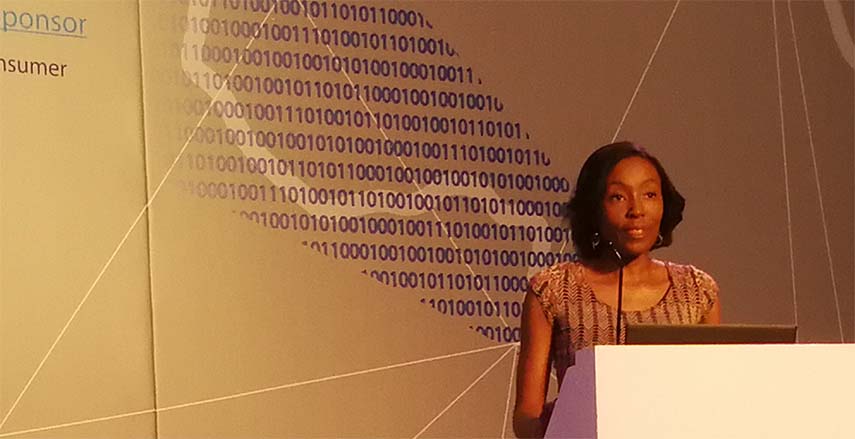Telecommunications providers are under pressure on a number of fronts, and are having to find new business models if they want to thrive into the future.
Kathy Gibson attended the Southern Africa Telecommunications, Networking and Applications Conference (Satnac) to find out more …
To survive the future, we need to change
No-one can be blind to the fact that the world is going through a radical transformation, and the changes are happening frighteningly quickly.
“It’s scary to think that many of the changes we live with today were enabled by the smartphone – which has been around for just 10 years,” says Professor Adam Habib, vice-chancellor and principal at the University of the Witwatersrand.
Transformation will be seen in the nature of work, he adds. Technology is quickly showing itself to be better than people at many tasks.
Read the full story here
5G, WOAN and the future of SA’s connectivity
The private sector needs to robustly engage government on the establishment of the wireless open access network (WOAN).
Robert Nkuna, director-general of the department of telecommunications and postal services, points out that the bill relating to WOAN will come before parliament in the coming weeks.
“We are calling on industry to engage on the structure of the infrastructure,” he says. “We must not be afraid: we must go to parliament and slug it out.”
The amended ECA Act seeks to establish a hybrid model, whereby the WOAN would co-exist with industry, Nkuna adds.
Read the full story here
Where do you stand on the 4th industrial revolution?
While optimists look forward to the benefits to be brought by the 4th industrial revolution, pessimists believe it might deepen divides and create more inequality than ever.
“There have been so many tech waves, that many people think the talk of the 4th industrial revolution is just another one; and we will move on as before,” says Dr Brian Armstrong, WBS chair at University of the Witwatersrand.
“The believers think it will bring fundamental change, and bring it quickly.”
Depending on where you sit in the digital vortex colours people’s ideas about this, Dr Armstrong tells delegates at the Satnac conference.
Read the full story here
Collaboration key to meeting connectivity challenges
Government, the telecommunications industry, the regulator and multiple industry stakeholders need to come together to solve fundamental economic challenges.
Telkom intends to bring together a multi-sectoral digital economy summit that will seek to bring together a range of stakeholders to start solving some of the challenges facing the economy.
Sipho Maseko, group CEO at Telkom SA, stresses that this summit needs to bring together players in multiple industries, as well as universities.
Read the full story here
Service providers look to adding enterprise value
In most mature markets, communications service providers are experiencing flat growth and are looking for new opportunities to advance their businesses.
Even though the Internet has grown the market, service providers have actually captured a limited portion of those revenue streams, says Dr Enrique Hernandez-Valencia, partner at Nokia Bell Labs Consulting.
At the same time, traffic has exploded – in fact it quadruples every five years – with the potential to spike in the years to come to reach a massive 15 zettabytes by 2025.
Read the full story here
The challenges and opportunities of digitalisation
The 4th industrial revolution and a greater level of digitalisation means that business models are being challenged across all industries.
For instance, even something like mining could be fundamentally changed by digitalisation, says Shyam Ranchod, digital transformation lead at Deloitte.
A panel discussion at Satnac attempts to understand digitalisation’s impact of economic growth.
Companies pay a high price for the lack of innovation, says Vernon Thaver, executive partner: executive programmes service delivery at Gartner.
Read the full story here
All change for communication service providers
Communication service providers (CSPs) are facing perhaps their biggest ever challenge: they are expected to provide rock-solid networks, but are losing revenue to over-the-top providers.
“They cannot delay in starting a transformation to offering value-add services,” says Vernon Thaver, executive partner: executive programmes service delivery at Gartner.
“They have to prevent themselves from being trapped in the role of utilities players.”
Read the full story here
How to become a digital master
Technology is just a part of digital mastery, and arguably the smallest part. The hardest part is in people’s own minds.
Digital success rests on the ability to change mindsets, says Rapelang Rabana, chief digital officer at BCX, addressing delegates at the Southern Africa Telecommunications, Networking and Applications Conference (Satnac) in Hermanus.
“The world needs to find a different way of viewing revenue and profit,” she says. “If you want to deliver profits faster means you have to help the world spin a little faster.
Read the full story here

